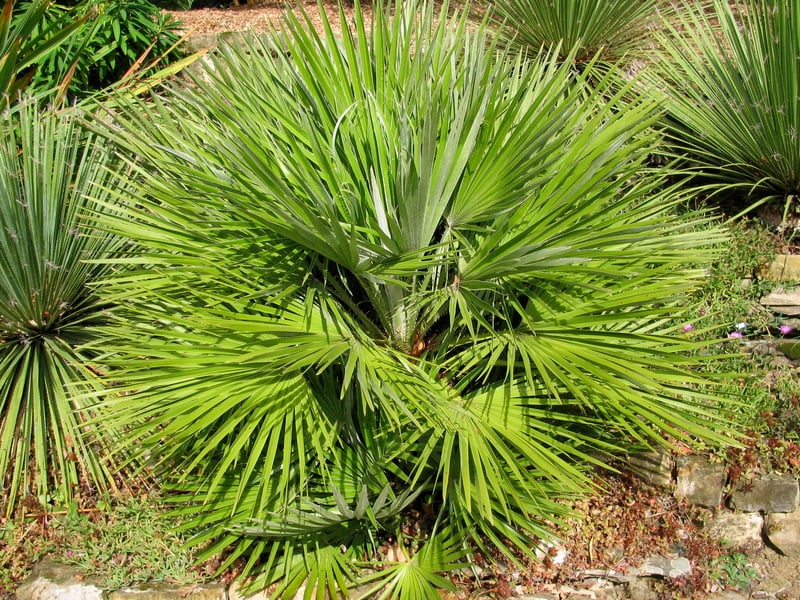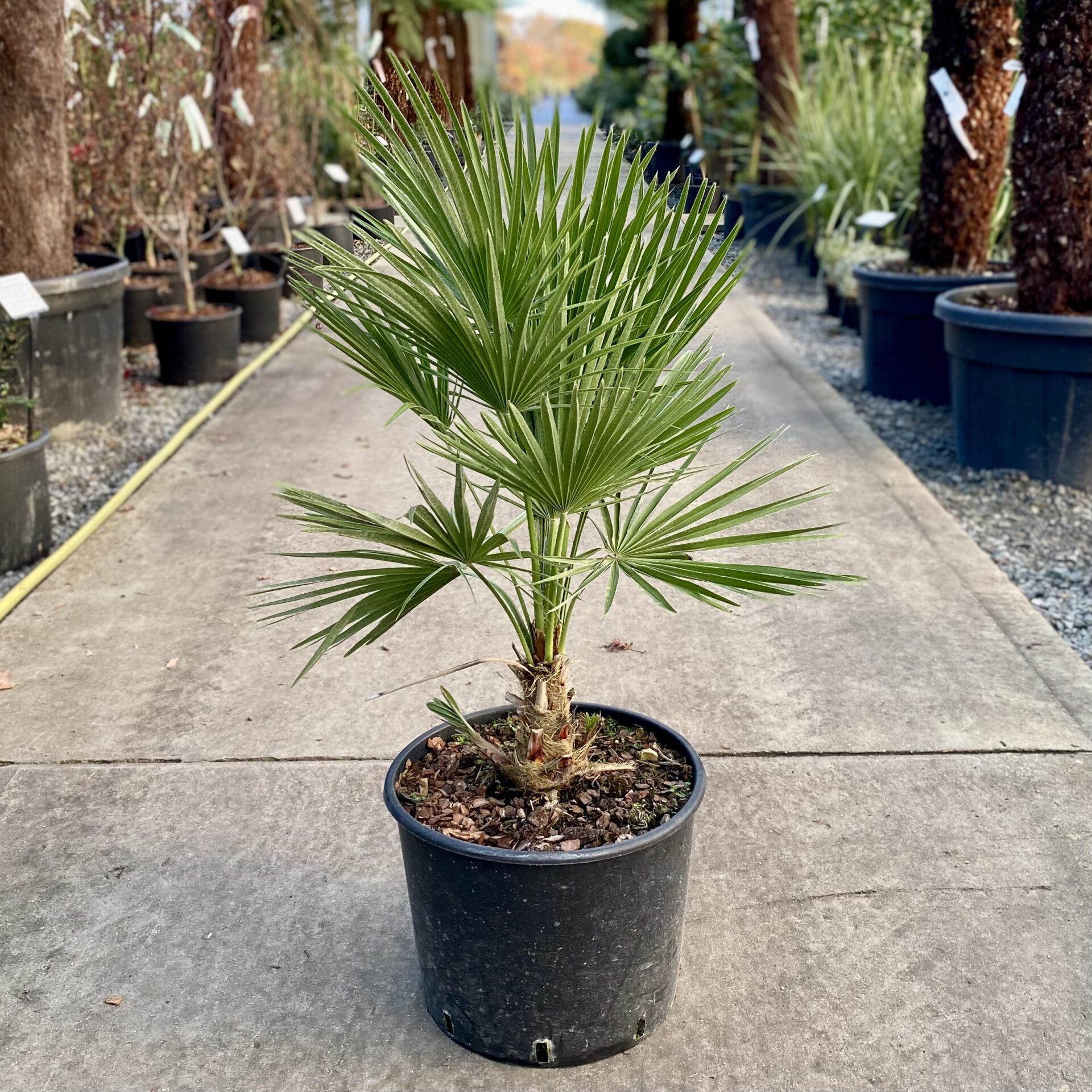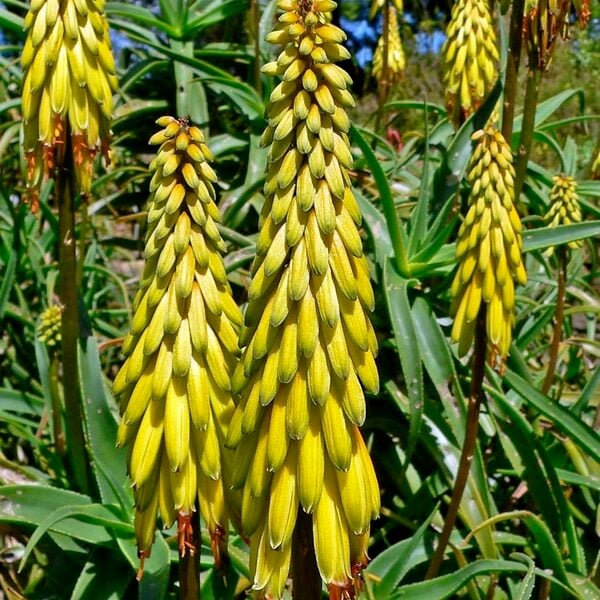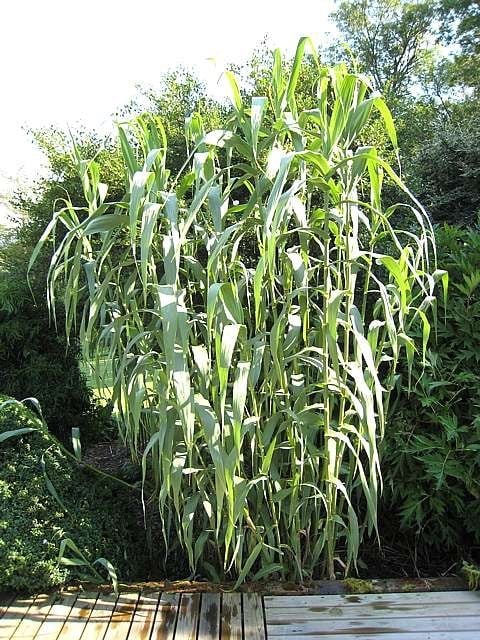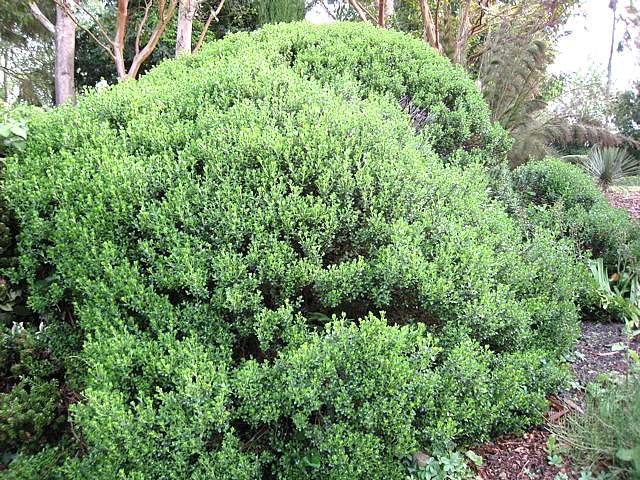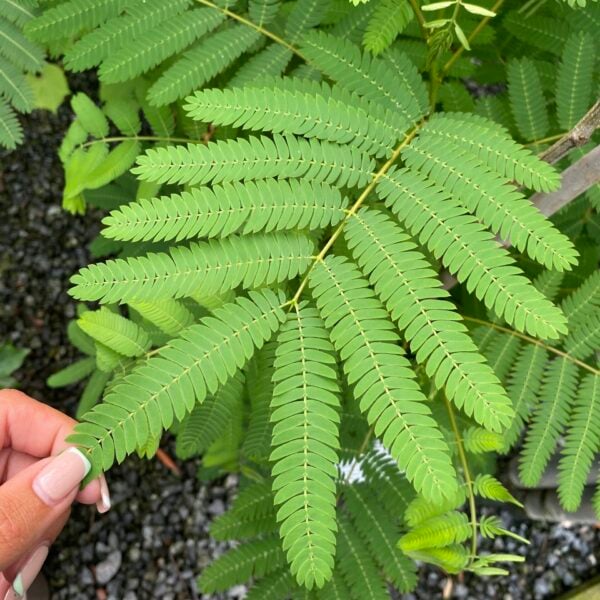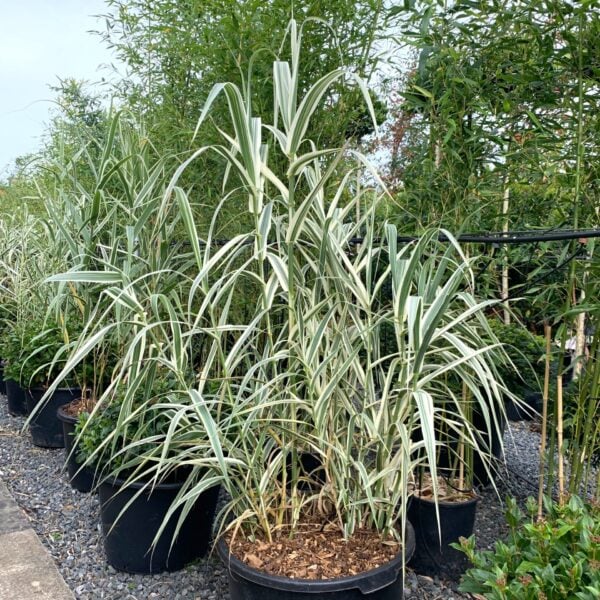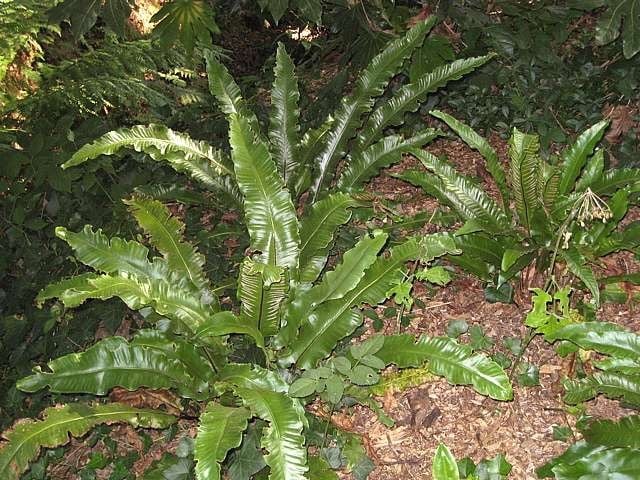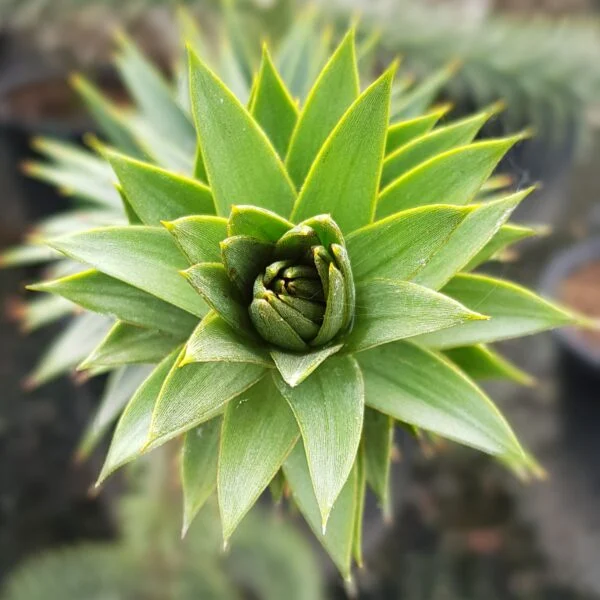Chamaerops humilis (Dwarf Fan Palm)
A mass of palm leaves. Grows out as much as up – producing lots of suckers. Smaller but more wind tolerant than Trachycarpus. Exotic and easy. Sun or shade. Please contact us for stock availability and sizes.

Hardiness level Amber
Grown well, these exhibit a rare verdancy, luxuriance and exoticness. The key is to feed and water enough to get them to grow reasonably fast (left to their own devices, they grow slowly) and, more importantly, remove all leaves that are less than perfect. Anything brown, yellow or spotty must be eliminated. Using a pair of secateurs can be an uncomfortable pastime as the thorns on the leaf stalks are vicious. Either keep your sleeves rolled down or buy some of our heavy duty gauntlets. 'Humilis' means low growing in botanical Latin so they don't - normally - get much taller than about 6ft but their geographical distribution around their native Mediterranean basin has allowed them to form many different forms over the eons of time. One thing they all have in common is the fact that - unlike any other palm - they sucker, so a single plant appears to be lots of plants. A great pile of palmy leaves. The variables are as follows : the height to which they grow (trunk-less to trunks 20ft tall), the colour of the leaves (very green to quite glaucous) and the fine-ness of the leaf (soft, delicate and flexible to quite stiff and course). I've seen them growing on bare mountain sides in Andalusia with no trunk and never rising more than a few feet from the ground to populations in northern Majorca that form tall trunks with lots of lovely soft green foliage waving around in the warm breeze. The taxonomists tell us they're the same plant but it's hard to believe.
We buy our plants from various nurseries in Tuscany and always get the plants that owe more to the luxuriant Majorcan ones than the crappy little Andalusian ones. Obviously. They're so tough that they'll grow in sun or shade. As with most plants the effect of shade is to draw the plant out (it's looking for light) so the leaf stalks extend making the plant look open and elegant. They're both good - just different. This can even be grown indoors. I once saw one in a dark living room in Sussex that was so drawn out, it took me a while before I recognised what it was. A much loved old friend that had done tours of duty in New York, Copenhagen and London before being moved down here.
Having spent the last few million years evolving in arid climates around the Med, they like our damp and mild climate very much in many ways but they do get fungal spots on the old leaves because they've never had to evolve a mechanism of their own to deal with such a damp eventuality. First cut off as many spotty leaves and burn them and if the spots are really bad, use a fungicide on the leaves to stop the fungus spreading. Very simple. Forewarned is forearmed and all that.
Propagated from seed.
Some notes about spotty leaves : some plants (this is one) are susceptible to getting black spots on their leaves. This is the growth of fungal organisms that land on the leaf and grow. They do no harm to the plant but they look unsightly. This spottiness only seems to afflict a small number of plants that have spent the last few million years evolving in a dry climate where airborne fungal spores are rare and therefore the plants have never had a reason to develop a way to combat the situation. The technique to combat these spots is a combination of fungicide (any will do - particularly anything recommended for roses) used when the spots appear and merely removing (and burning preferably) affected leaves. Leaf removal removes the source of infection, fungicide kills the spores (but doesn't make the spots go away).
N.B. When clipping several plants with the same tool, have a bucket containing a 5% bleach solution and swish your blades around for 30 seconds between plants to sterilise them. This will help avoid the chance of cross contamination of disease.
As with all woody plants, plant high, exposing as much of the taper at the base of the trunk as possible. Allowing soil to accumulate round the base of a tree can be fatal. Keep very well watered when first planted.
Additional Information |
|
|---|---|
| Soil Type | |
| Light | |
| Plant Type | |
| Continent of Origin | |
| Specialist Plants | |
| Features | |
| Situation | Coastal, Conservatories, Exposed (To wind and sun), Mild City Gardens, Plants for Pots, Seaside, Sheltered Garden |
| Hardiness | |





